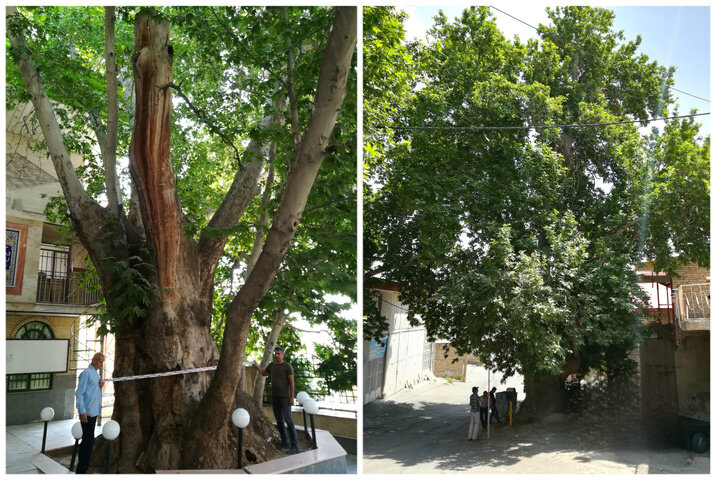Two long-lived trees make it to Iran National Heritage List

TEHRAN – The Director-General of Cultural Heritage, Tourism, and Handicrafts for Alborz Province has proudly announced the inclusion of two long-standing trees from the region in the country’s National Heritage list.
As detailed by Iranian media, citing the Public Relations Department of Cultural Heritage, Tourism, and Handicrafts in Alborz Province, Rahim Khaki highlighted the rigorous examination these trees underwent by the National Heritage Registration Council. “Their documentation successfully met all the necessary conditions for national recognition, solidifying their status as significant cultural and natural landmarks,” he noted.
These revered landmarks consist of two Plane trees located in the picturesque villages of Shalamzar and Kooshkzar, boasting an impressive age of about 400 to 500 years. The rich history embedded in these trees adds a layer of cultural significance to their inclusion in the National Heritage list.
Continuing his statement, the Director-General emphasized that the conservation file for these ancient trees, led by Alborz Province, underwent a meticulous separate examination, ensuring a comprehensive approach to their preservation.
Furthermore, shedding light on the cultural and historical importance of Plane trees, it's noteworthy that they have always been revered as symbols of fertility and the lush greenery of nature in Iranian culture. Traditionally believed to possess healing properties, these trees were thought to prevent the spread of fever and infectious diseases. Planted predominantly in sacred areas such as prayer sites and holy shrines, they hold a unique place in the cultural tapestry of Iran.
Adding to its allure, Iran boasts an opulent tourist circuit featuring 27 UNESCO World Heritage sites, with treasures like the vast Hyrcanian Forest and the mesmerizing Lut Desert among its natural wonders. As Iran ambitiously looks forward to 2025, the country aims to carve a more substantial share in the global tourism industry, leveraging its rich cultural and natural heritage.
Leave a Comment